With the increasing levels of hazardous chemicals in the atmosphere we all make sure to wear masks and cover our faces before moving out of our homes but do we ever think about protecting ourselves from the toxins that exist in our homes?
According to the survey conducted by Environmental protection agency it has been proved that the air we breathe indoors can be up to 5 times more polluted than the air outside. Our homes contain a lot of stuff that release various different types of toxic gases such as ammonia from kitchen sink and toilets, formaldehyde from plywood, wall panelling, Home furnishings etc. these gases deteriorate the quality of air and hence resulting in bad health.
The best environmental friendly solution to this problem is going green. This can happen just by adopting few house plants. So here are a few species of plants that you can easily grow indoors.
Indoor Plants that Purify Air
Aloe Vera
This is the most useful and commonly found plant with short height and easy to maintenance. It generally needs a warm and dry environment along with little bit of sunlight as it cannot survive in complete shade.
Aloe Vera helps in clearing formaldehyde and benzene, which are produced in the form of by-products from many household product such as paints, cleaners, plywood etc. The gel like content found inside the leaves is also used as a beauty product.
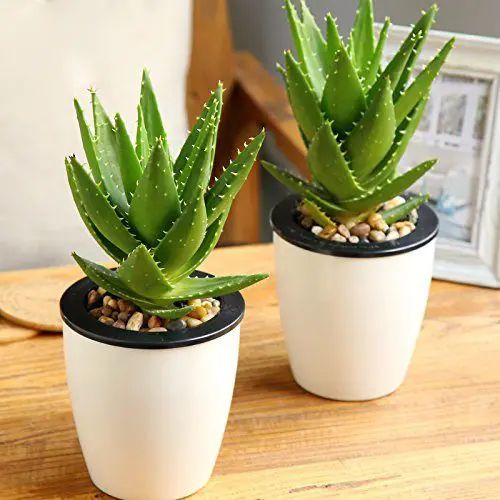
Areca Palm
Areca Palm is a leafy plant. It can be kept anywhere in the house where there is no direct sunlight as it cannot thrive in places with direct sunlight. It grows up to 30 feet long when planted outdoors, but it is restricted to about 6-7 feet when placed in a small container or a pot because placing it in a pot would not let the roots spread thus limiting the size of the plant. It effectively cleanses the air by filtering toluene and xylene.
Also Read: List of Plants That You Can Grow Indoors
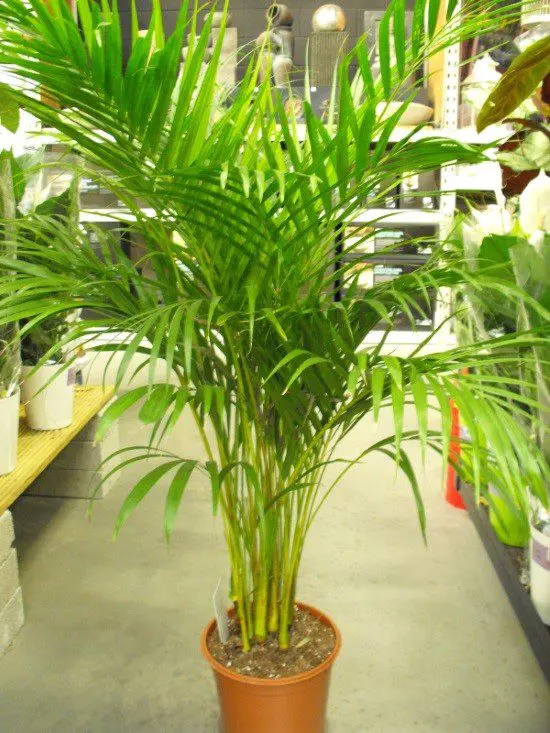
Indian Basil
Indian basil is commonly known as Tulsi. It is well known for its numerous medicinal values. The Indian basil require sunlight for its growth therefore the apt place to keep tulsi is either near a window or on a balcony. Tulsi gives out oxygen for almost 20 hours a day and absorbs harmful gases such as carbon monoxide and sulphur dioxide.
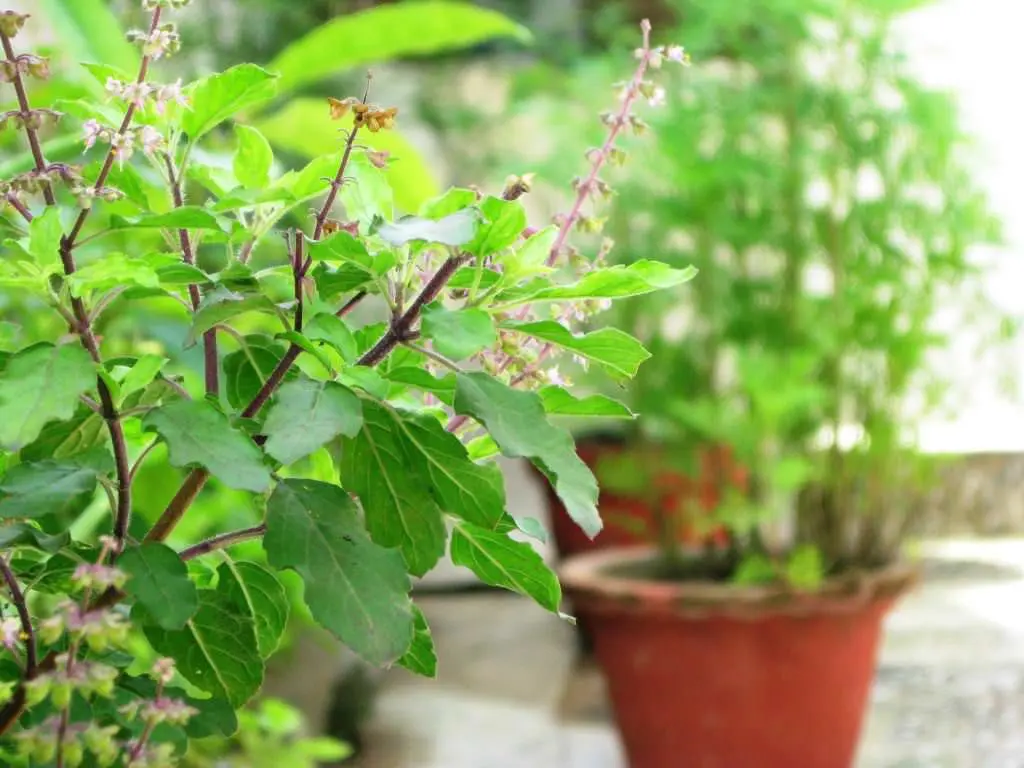
English Ivy
It is an evergreen climbing vine, most commonly found growing outdoors. English ivy sustainably reduces the amount of formaldehyde and airborne faecal matter particles. The plant needs an adequate amount of light to stay fresh. The only thing that should be kept in mind is, the plant does not allow stagnant water so let the soil dry before watering it again.
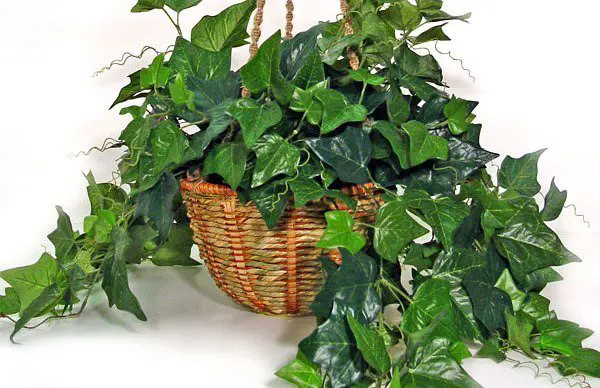
Snake Plant
Snake plant is one of the top rated air purifying plants, approved by NASA. This plant grows effortlessly with a minimal amount of sunlight and requires no extra attention. It can go for weeks without water. The only thing that is to be taken care of is that the plant gets rot easily so they need to be planted in a place where the soil drains out easily.
Snake plant which is also known as Saint George’s sword is best suited for places such as bathrooms and store rooms because the plant can filter out harmful gases like formaldehyde which are found in most of the personal care products.
Also Read: Indoor Plants That Require Zero Maintenance
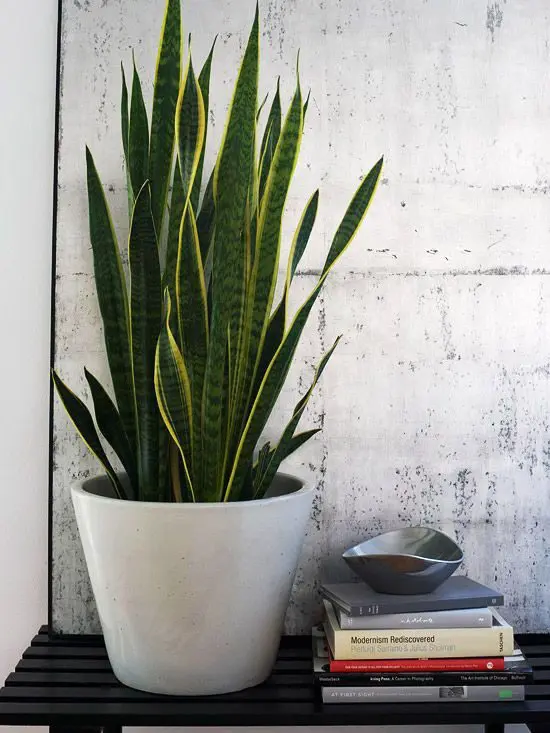
Red Edged Dracaena
This plant can be placed anywhere throughout the house where there is no direct sunlight. It can grow up to a height of 12 feet. The soil for this plant must always be moist with proper drainage. Dracaena helps in contending gases like xylene, trichloroethylene and formaldehyde released from varnishes, wall panels, ceiling tiles and sealers.
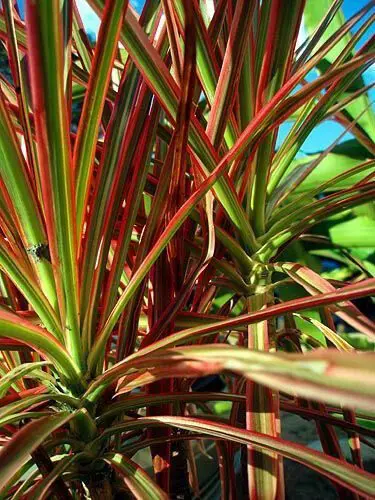
– Sonali Chauhan





